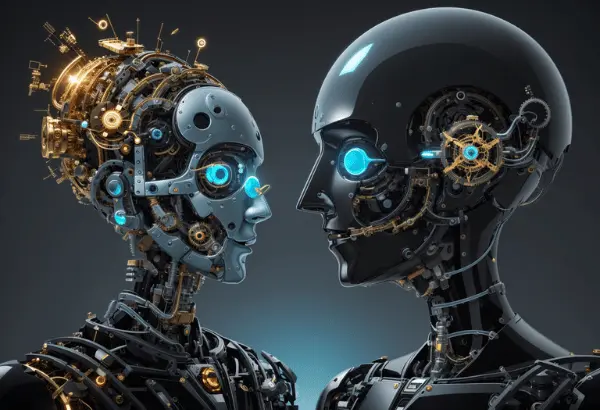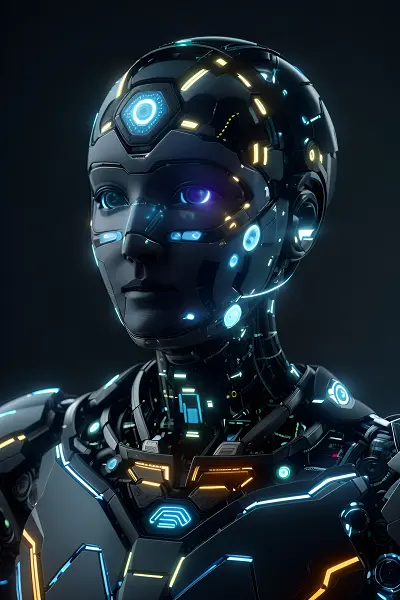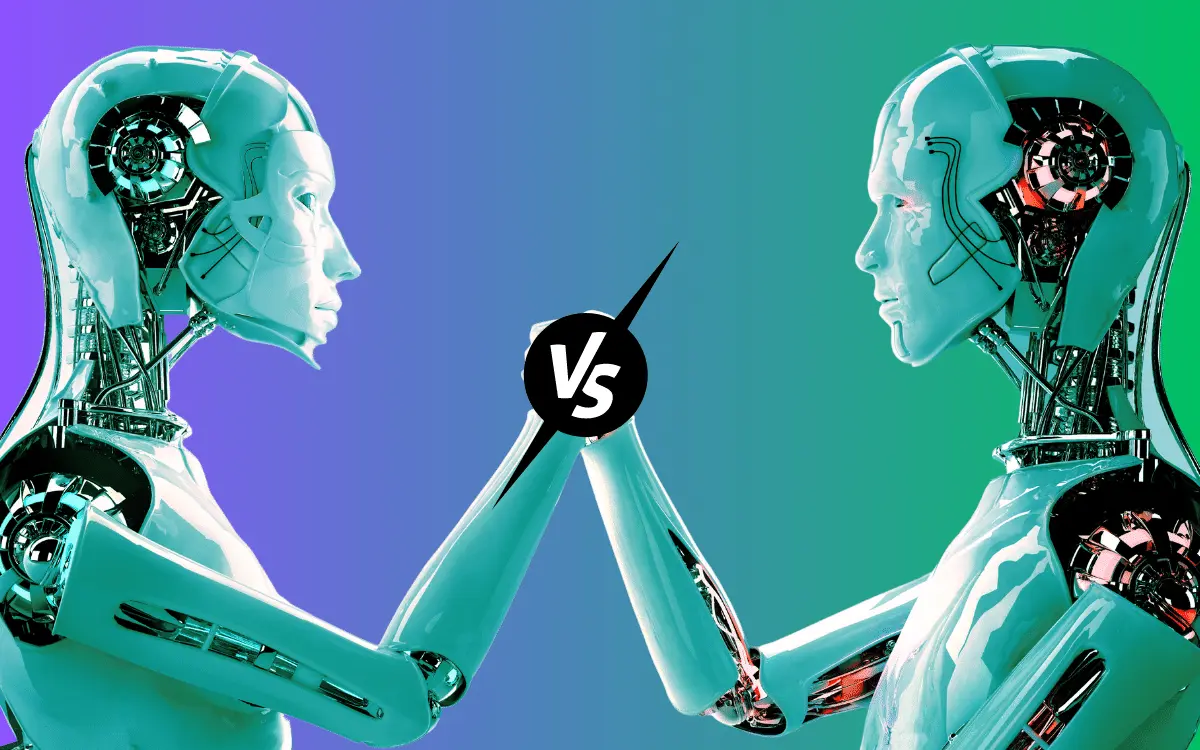The phrase “AI” has been hurled around frequently in the context of the information technology sector. It’s a term for computers designed to perform jobs normally requiring human intelligence. But now, there’s a brand-new buzzword in town: AI (SI). It’s a radical concept that describes computers with artificial intelligence (AI) that can mimic human cognition and decision-making.
Table of Contents
Despite their superficial similarities, there are important distinctions between the two. This article will dissect the differences between AI and SI and illuminate their distinctive features. After reading this, you should better grasp the benefits and drawbacks of both ideas.
Artificial Intelligence: What Does It Mean?
Artificial intelligence (AI) defines the development of computer systems that can perform tasks that typically require human intelligence, such as understanding natural language, recognizing patterns, learning from experience, and making decisions. These systems are designed to adapt and improve their performance over time as they receive more data and feedback. AI includes a range of techniques, including machine learning, deep learning, natural language processing (NLP), and computer vision, among others.
Ultimately, AI aims to create intelligent machines that can perform tasks as well as or better than humans, with the potential to revolutionize many industries and aspects of our lives.
Artificial Intelligence at Glance
Artificial intelligence, or AI for short, is a field of computer science and engineering that focuses on creating machines and software that can perform tasks that typically require human intelligence. This can include tasks such as understanding natural language, recognizing objects in images, making predictions, and even making decisions.
- AI has been around for a long time, but recent improvements in machine learning, deep learning, and natural language processing have put it at the forefront of technological innovation.
- AI is now used in various industries, from healthcare and finance to transportation and entertainment.
- One of the best-known applications of AI is the development of virtual assistants such as Apple’s Siri and Amazon’s Alexa.
- These systems use natural language processing to understand spoken commands and can perform various tasks, from setting reminders and playing music to controlling smart home devices.
- AI is also being used to automate many tasks in manufacturing and logistics, for example. This can include quality control and inventory management, which AI systems can do more quickly and accurately than people.
- AI is used in healthcare to look at medical images and help diagnose and plan treatments.
- AI algorithms can quickly and accurately look at a lot of data, which helps doctors make better decisions and give their patients better care.
- AI is also used in finance to analyze market trends and make investment decisions.
- AI systems can quickly analyze large amounts of data and predict future market movements, helping investors make more informed decisions.
- Some experts worry that AI could lead to job losses and increased economic inequality. In contrast, others fear AI could be used for malicious purposes such as cyber-attacks or warfare.
As AI continues to advance, it will be important for researchers, policymakers, and the public to work together to ensure that the benefits of this technology are maximized while minimizing potential risks. AI is a rapidly evolving field with enormous potential to transform how we live and work, and its impact is only beginning to be felt.
History of Artificial Intelligence
Artificial intelligence (AI) is a broad field that includes a lot of different ways to make machines that can think for themselves.

- 1950- The history of AI can be traced back to the 1950s when researchers first began to explore the possibilities of creating machines that could think and reason like humans. One of the earliest developments in AI was the creation of expert systems designed to simulate the decision-making abilities of human experts in particular domains.
- 1960-70- These systems were first developed in the 1960s and 1970s and were used for various applications, including medical diagnosis, financial analysis, and manufacturing.
- 1980- In the 1980s, researchers began to explore the possibilities of machine learning, which involves using algorithms to teach machines to learn from data. Several AI applications, such as speech recognition, image recognition, and natural language processing, were made with this method.
- 1990– In the 1990s, AI research moved toward making intelligent agents, computer programs that can act independently. These agents were used for various applications, including robotics, gaming, and e-commerce.
- 2000– In the early 2000s, AI research was further advanced by the development of deep learning, which involves using neural networks to train machines to recognize patterns in large datasets. This approach has been used to develop various applications, including self-driving cars, speech recognition, and image and video analysis.
- 2023- Today, AI is a field that is growing quickly and is used in many different areas, such as healthcare, finance, transportation, and entertainment. With the development of new technologies and approaches, AI will likely continue to play an increasingly important role in our lives in the years to come.
Types of Artificial Intelligence
There are mainly three types of artificial intelligence, namely:
Artificial Narrow Intelligence (ANI) or Weak AI:
This type of AI is designed to perform a specific task or set of tasks, such as recognizing speech, playing chess, or driving a car. Without much programming, ANI systems can’t apply knowledge to other areas or learn new things.
Artificial General Intelligence (AGI) or “strong AI “:
Aims to replicate human-level intelligence in machines. Artificial General Intelligence systems are designed to perform various tasks, learn from experience, and adapt to new situations. They can reason, understand natural language, and solve complex problems without explicit programming.
Artificial Superintelligence (ASI):
This type of AI refers to a hypothetical future AI system that surpasses human intelligence in all areas, including creativity, emotional intelligence, and problem-solving. Artificial Superintelligence is considered the ultimate goal of AI research and development.
It is worth noting that there are different definitions and classifications of AI, and some experts may use different terms or subcategories.
Applications of Artificial Intelligence
Artificial intelligence (AI) is a rapidly growing field with many practical applications across various industries. Here are some of the most common applications of AI:
Natural Language Processing (NLP):
NLP is a branch of AI that focuses on how machines can understand and process human language. NLP is used in many applications, including language translation, speech recognition, and text analysis.
Machine Learning:
Machine learning is a subset of AI that involves training machines to learn from data. This technology is used in many applications, including image and speech recognition, fraud detection, and recommendation systems.
Computer Vision:
Computer vision involves training machines to interpret visual data. This technology is used in many applications, including autonomous vehicles, facial recognition, and object detection.
Robotics:

AI is used to develop robots that can perform tasks autonomously. This technology is used in many industries, including manufacturing, healthcare, and agriculture.
Predictive Analytics:
Predictive analytics involves using machine learning algorithms to analyze data and predict future events. This technology is used in many industries, including finance, healthcare, and marketing.
Personalization:
AI can be used to personalize products and services for individual customers based on their preferences and behaviors. This technology is used in many industries, including retail, entertainment, and healthcare.
Fraud Detection:
AI can detect fraudulent activities in financial transactions, insurance claims, and other industries.
Healthcare:
AI is used in many areas of healthcare, including drug discovery, medical imaging, and patient monitoring.
Advantages and Disadvantages of Artificial Intelligence:
| Advantages of Artificial Intelligence | Disadvantages of Artificial Intelligence |
| Efficiency: AI can process vast amounts of data much faster than humans, enabling it to identify patterns and insights that would be difficult for humans to recognize. | Lack of empathy: AI lacks human emotion and empathy, making it difficult to understand and respond to human needs and emotions. |
| Accuracy: AI can perform repetitive tasks with high accuracy, reducing the risk of human error and increasing productivity. | Unemployment: As AI automates tasks that would otherwise require human intervention, it may lead to job displacement and unemployment. |
| Decision-making: AI can analyze complex data and provide insights that humans may miss, enabling it to make better decisions. | Bias: AI algorithms may incorporate human biases, leading to discriminatory outcomes in decision-making. |
| Personalization: AI can learn from user behavior and preferences to provide personalized experiences, such as recommendations on streaming platforms or personalized product recommendations. | Dependence: As we rely more on AI, we may become overly dependent on technology, which could have negative consequences in the event of a system failure. |
| Cost savings: AI can automate tasks that would otherwise require human intervention, reducing labour costs and increasing efficiency. | Security concerns: As AI becomes more prevalent, it may be targeted by malicious actors seeking to exploit vulnerabilities or use it for malicious purposes. |
What is called Synthetic Intelligence?
Synthetic intelligence refers to the development of computer systems that exhibit intelligence that is not simply an imitation of human intelligence but rather a unique and genuine form of intelligence that emerges from the system’s design and operation. Unlike artificial intelligence, which aims to replicate human-like intelligence, synthetic intelligence may involve entirely new cognitive processing, decision-making, and problem-solving forms, not necessarily modeled on human thinking.
Types of Synthetic Intelligence
As an AI language model, I can say that there are various types of artificial intelligence. However, it’s important to note that the development of AI is still ongoing and that new types of AI can emerge in the future. Some of the common types of artificial intelligence include:
- Rule-based AI: This type of AI uses predefined rules and logical reasoning to make decisions. It’s also known as expert systems.
- Machine learning: This type of AI uses algorithms that can learn from data without being explicitly programmed.
- Deep learning: This subset of machine learning uses artificial neural networks to model complex patterns in data.
- Natural Language Processing (NLP): This type of AI focuses on the interaction between computers and human languages. It’s used in speech recognition, sentiment analysis, and chatbots.
- Robotics: This type of AI involves the development of machines that can perform tasks that typically require human intelligence, such as perception, decision-making, and problem-solving.
- Cognitive Computing: This type of AI attempts to simulate human thought processes, such as perception, reasoning, and learning.
- Computer Vision: This type of AI enables computers to interpret and understand visual information from the world, such as images and videos.
- Generative Adversarial Networks (GANs): This type of AI uses two neural networks to generate new data that mimics the characteristics of the training data.

Differences between AI and SI
Synthetic intelligence (SI) and artificial intelligence (AI) are often used interchangeably but have different meanings. Artificial intelligence refers to the development of computer systems that can perform tasks that would typically require human intelligence, such as recognizing speech, understanding natural language, making decisions, and more. AI systems are programmed to learn from data, identify patterns, and make decisions based on those patterns.
On the other hand, synthetic intelligence refers to creating intelligent systems not based on biological organisms’ structure or functioning. SI involves designing and creating intelligent systems that are entirely synthetic, with no biological components. This can include many systems, such as artificial life forms, autonomous robots, etc.
The key difference between AI and SI is that AI refers to developing computer systems that can mimic human intelligence, while SI involves the creation of entirely synthetic intelligent systems that are not based on biological structures or processes.
Final Words
Artificial intelligence (AI) and synthetic Intelligence (SI) are distinct fields of study with differences in origins, goals, and capabilities. AI is a branch of computer science that aims to develop algorithms and systems that can mimic human intelligence and behavior, while SI is a relatively new field that seeks to create new forms of intelligence that are not based on biological organisms. AI systems are based on machine learning algorithms that use large amounts of data to identify patterns and make predictions.
On the other hand, SI systems use self-organizing principles to create emergent behavior that is not based on pre-programmed rules. AI and SI differ in their goals. AI aims to create systems that can perform specific tasks more efficiently and accurately than humans, while SI seeks to create new forms of intelligence that can solve complex problems and adapt to new situations.
In conclusion, AI and SI are two distinct fields of study with unique characteristics and goals. While AI is focused on mimicking human intelligence and behavior, SI seeks to create new forms of intelligence that are not based on biological organisms. Understanding these differences is essential for the development of intelligent systems that can meet the challenges of the future.
FAQs
What is the difference between Artificial Intelligence and Synthetic Intelligence?
Artificial Intelligence (AI) is the simulation of human intelligence in machines programmed to think and learn like humans. On the other hand, Synthetic Intelligence (SI) is an entirely new form of intelligence not based on human intelligence but designed from scratch.
How is AI designed?
Programming computers design AI to perform specific tasks using algorithms, mathematical models, and statistical analysis. AI algorithms learn from data and are trained to recognize patterns and make decisions based on that data.
What is the difference in the learning process between AI and SI?
AI learns from pre-existing data through machine learning algorithms. In contrast, SI uses a combination of evolutionary algorithms and neural networks to generate its own algorithms and learning processes.
What are the advantages of SI over AI?
SI can potentially develop more efficient and adaptable algorithms and learning processes than AI. SI can also create new approaches to solving problems humans may not have considered.
What are some examples of SI applications?
SI has been used in various applications, such as robotics, nanotechnology, and quantum computing. One example of SI is the creation of new materials through computational simulations, where SI algorithms generate new combinations of atoms and predict their physical properties.
Can AI and SI work together?
Yes, AI and SI can work together to create more advanced systems that combine the strengths of both approaches. For example, AI can analyze data and identify patterns, while SI can be used to develop more efficient and effective algorithms based on those patterns.





Greetings! Very useful advice in this particular article! Its the little changes that will make the biggest changes. Thanks for sharing!